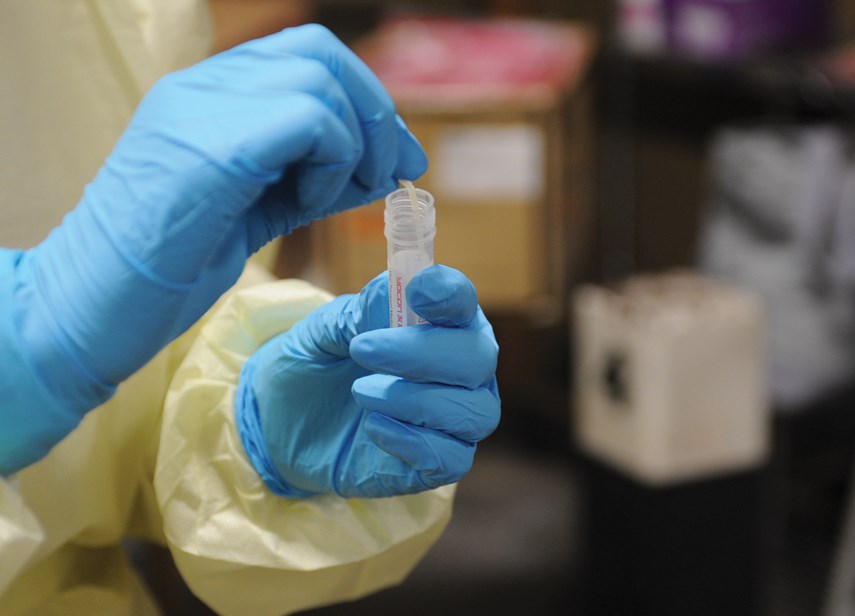KENORA – A major COVID-19 outbreak in Wabaseemoong Independent Nations is showing signs of coming under control, indicates Dr. Kit Young Hoon.
The medical officer of health for the Northwestern Health Unit offered cautious optimism on the situation during a virtual press conference Tuesday, saying she saw no reason yet for the region to move from its current Yellow-Protect level.
The health unit reported only one case Tuesday, and none on Monday.
Cases had climbed to record levels on Friday, with 107 active cases across the NWHU, 101 of which were in the Kenora region.
By Tuesday, active cases had fallen to 91, with 82 in the Kenora region.
Most recent cases continue to be related to a single First Nation, said Young Hoon, while declining to identify the community.
However, Wabaseemoong remains the only community in the NWHU to report significant cases in recent weeks.
The First Nation went into lockdown after Chief Waylon Scott reported 12 cases on Feb. 10, and is now receiving assistance from a veteran-led disaster relief group.
Canada’s Minister of Indigenous Services Marc Miller referenced a “large outbreak” in the First Nation on social media Tuesday.
The NWHU has reported 144 outbreak-related cases since Feb. 9, though it’s uncertain whether all of those are tied to Wabaseemoong.
The health unit has referred questions on the outbreak to the Kenora Chiefs Advisory, which is supporting the community. That organization has declined to provide specific details on the situation.
The outbreak remains the only major source of recent cases, Young Hoon confirmed Tuesday.
“There’s one community that’s primarily affected,” she said. “We’re seeing very few cases outside of that community.”
Young Hoon pointed to positive signs on the outbreak Tuesday, saying she expected to see the "tail end" of it in a matter of weeks.
“The case numbers are [no longer] increasing rapidly… if anything, it’s plateauing, and we’re beginning to see the early signs it could be decreasing.”
Contact tracing for the outbreak is “a significant body of work,” Young Hoon said, much of which is being handled by Indigenous Services Canada with some NWHU support.
Public health authorities have not yet found any evidence the outbreak has spread beyond Wabaseemoong members, she noted.
“I think that partners and the community itself have made a tremendous effort to support cases and high-risk contacts to self-isolate,” she said. “At this point we haven’t seen spread beyond the community from this large increase in cases, which is good news.”
It’s one of the key reasons Young Hoon believes the region can safely remain at Yellow in the provincial COVID-19 response framework, despite having the most COVID-19 cases per capita of any Ontario health unit in recent data.
“We have very high rates,” she conceded Tuesday. “The reason we’re still at Yellow is because most of the cases are affecting only one community. At this point, I think it’s reasonable to continue at Yellow, but we’re monitoring the situation very, very closely.
“Things can change from day to day,” she continued. “If there was suggestion of spread beyond that community, or significant spread within other communities, then we’d need to think about changing the colour code.”
The worsening situation in the neighbouring Thunder Bay District Health Unit is becoming a concern, Young Hoon warned.
“I think what’s happening in Thunder Bay is a potential risk to our catchment area, just because of how people move and the possibility of spread,” she said.
NWHU residents should avoid non-essential travel, she said, while those travelling into the Thunder Bay District for essential reasons should carefully mind public health precautions.
None of the three COVID-19 variants of concern tracked by provincial health authorities have yet been detected in the NWHU. All positive samples from the health unit are now being screened for variants, Young Hoon said.
